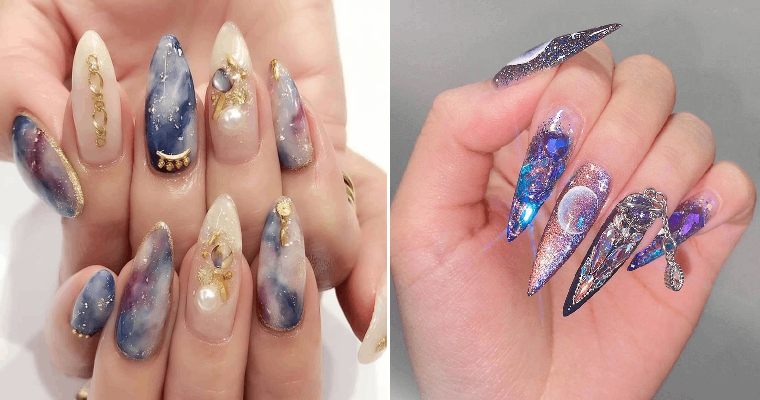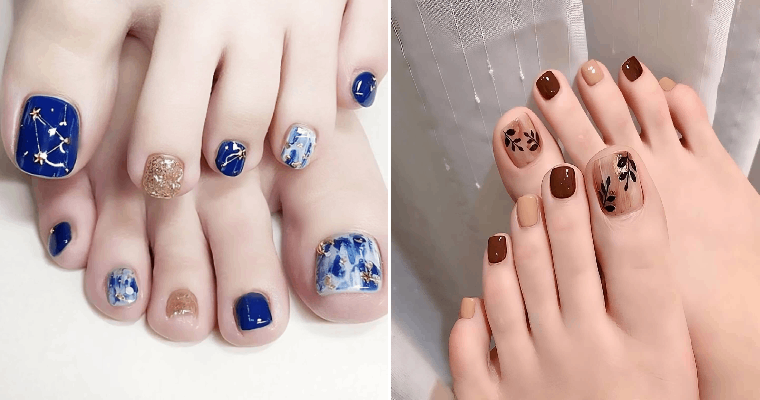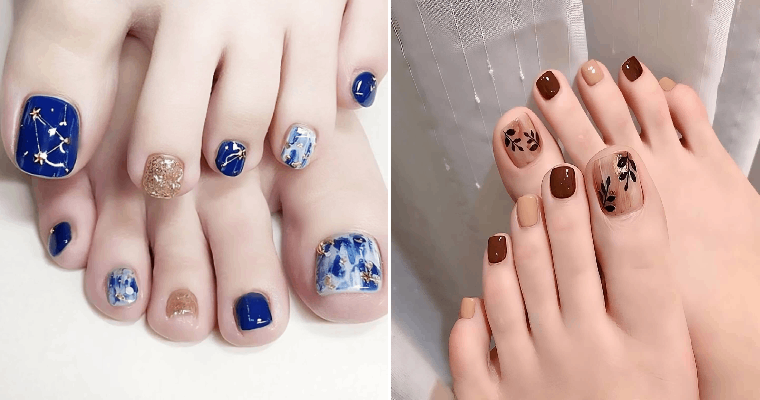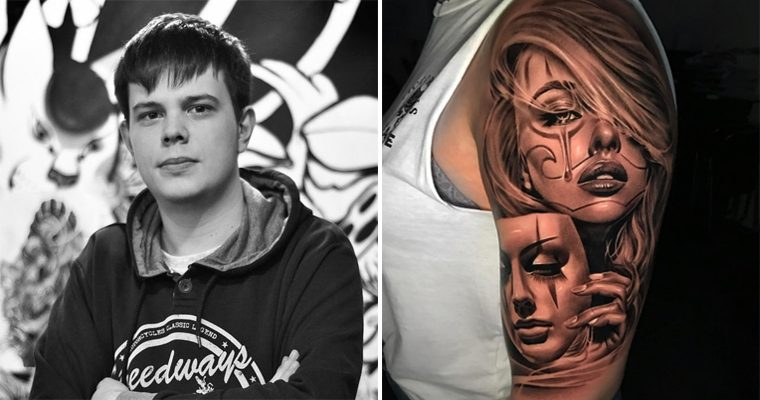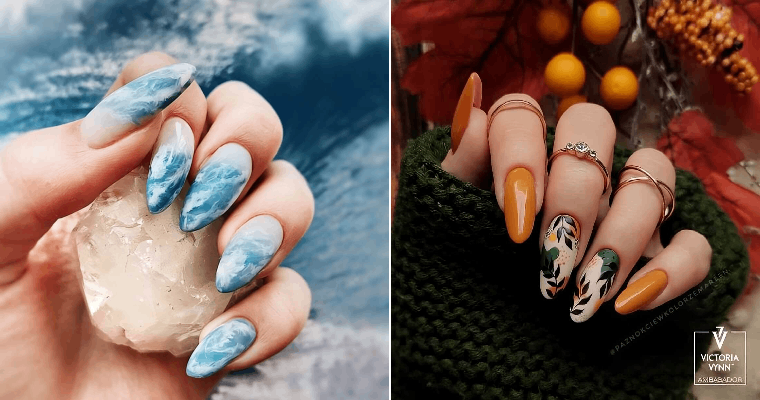A henna tattoo is for you if you’ve ever considered getting inked but weren’t ready to commit to getting a tattoo or if you just prefer the aesthetic of traditional Indian wedding tattoos.
Made from a plant-based ink or paste, henna tattoos are completely painless and naturally fade over time. Henna comes in shades of red, orange, brown or blue-black and looks striking on a wide variety of skin tones. Keep reading to discover the most beautiful henna tattoo designs that are popular right now.
1. Henna Leg Tattoo
Leg tattoos are becoming more and more popular for women. That’s because they are eye-catching, sexy, and feminine. You can show them off when you wear a dress or shorts. If you’re toying with the idea of getting a permanent leg tattoo, try testing out the design in henna first.

2. White Henna Tattoo
For those with deep skin tones – or who want an eye-catching twist on traditional henna – a white henna tattoo is ideal. White henna does not contain any part of the henna plant and does not bleach, discolor, or stain the skin. Instead, a mixture of surgical-grade adhesive and skin-safe body paint is applied. It has the same texture as real henna and can be used in the same way, but it doesn’t last as long – it will wash away in three to ten days.

3. Henna Tattoo with Meaning
One of the most meaningful henna tattoos is the bridal mehndi in Indian culture. When inked on the palms, henna tattoos allow the wearer to receive blessings. Swan tattoos represent success and beauty, while the lotus flower is a sacred Hindu symbol. It’s associated with the gods Vishnu and Brahma and symbolizes eternity, divine purity.

4. Henna Flower Tattoo
Traditionally, flowers represent happiness and joy, while vines and leaves symbolize devotion – making these plant-based designs very popular for wedding henna tattoos. It’s possible to create any floral-inspired design with henna, using any art style. Flowers look feminine and beautiful and are even better when combined with other natural symbols like birds, butterflies, and dragonflies.

5. Black Henna Tattoo
If you want your henna tattoo to appear very dark, rather than the usual red, orange, or brown, opt for a jagua-based ink. Jagua is made from the juice of a South American fruit, and jagua tattoos are traditional in some the Caribbean and indigenous American cultures. Some products labeled ‘black henna’ are made from a toxic dye called p-paraphenylenediamine (PPD). This ingredient is not skin safe and can cause severe illnesses and scarring.

6. Small Henna Tattoo
Small henna tattoos are quicker to apply and ideal if you want to try out henna for the first time. They are also an excellent option for a matching group tattoo. Like regular tattoos, simple henna designs look better when smaller in size. These tattoos look best when placed on the hands, fingers, or inner wrist. Try a nature-inspired tattoo or geometric patterns and shapes.

7. Sun Henna Tattoo
The sun – and the moon and stars – is another traditional henna tattoo design. It represents a love that is as endless as the sky. Many people choose henna ink for a tribal-style sun tattoo. However, the final look can be as straightforward or as complicated as you want. It’s also striking when combined with a matching moon tattoo.

8. Henna Finger Tattoos
Henna looks striking when applied to the fingers as the color stands out against many skin tones. Popular designs include drops, dots, and leaves, as well as the full-color ‘dip-dye’ look. Just like other hand tattoos, henna finger tattoos will be fully visible at all times. For that reason, it’s essential to choose an experienced henna artist to apply these tattoos.

9. Henna Wrist Tattoo
Henna looks especially good when applied to the wrists and hands. From a compact bracelet-style design to plants and flowers, your henna wrist tattoo will stand out. One henna wrist tattoo that is trending at the moment is a mandala lotus. It combines the sacred Hindu symbols of eternity, divinity, and purity to create a beautiful final look.

10. Henna Sleeve Tattoo
A sleeve tattoo is a single design or a collection of tattoos that stretched from the shoulder to the wrist. If you want to test out the look of a full sleeve without the commitment, try a henna sleeve tattoo. The temporary nature of the design allows you to experiment with different designs and decide if the bold, eye-catching look of a sleeve is right for you.

11. Henna Shoulder Tattoo
The shoulder is an ideal placement for a traditional-style henna tattoo. Frequently, these designs involve the circular mandala symbol. The mandala represents the universe and divine harmony. Because it radiates outwards, the design fits perfectly with the curves of the shoulder.

12. Forearm Henna Tattoo
To show off your henna tattoo, have it drawn on your forearm. You’ll be able to see your tattoo any time, or easily cover it up with a shirt. It’s the ideal placement for long, winding designs like leaves and vines, which are traditional in Arabic henna body art. Alternatively, you could try geometric shapes like lines and grids, or a written message.

13. Henna Thigh Tattoo
The thigh is a trending tattoo placement for women. Not only is it a sexy area for your body art, but it also provides you with plenty of space for a bigger, more complex design. Your henna artist can also use their skills to the full effect, with no space limitations. Perfect for the warmer months, a henna thigh tattoo will take your bikini or beach outfit to the next level.

14. Henna Ankle Tattoo
Henna ankle tattoos are a little more subtle than other placements because they can be easily covered. They are completely painless, while regular ankle tattoos are some of the most painful. Henna ankle tattoos are often designed to look like anklets and foot jewelry. They have a beautiful feminine look and pair well with heels or sandals.

15. Henna Foot Tattoo
Foot henna tattoos are very traditional in Hindu culture. That’s because the feet are the part of the body that is in contact with the Earth. Tattoos on this body part represent our connection to the natural world. Popular designs include peacocks, paisley, and mandalas. However, you can choose something less traditional if you’re wearing henna as a fashion statement.

16. Henna Tattoo Eyebrows
You can use henna to tint your eyebrow hairs as well as create a temporary brow tattoo. Many women try out this method before they commit to microblading. Because it dyes your skin as well as your hairs, the henna eyebrow tattoo can create a different brow shape and give you a thicker, fuller look. It also includes extra pigments, so your brows won’t appear red or orange.

17. Cute Henna Tattoos
As stated previously, henna tattoos don’t have to be traditional to be eye-catching. You can choose any design that you want, just as you can with a regular tattoo. For those who are young at heart and have a playful personality, animals, cartoon characters, and food are popular cute tattoo choices.

18. Simple Henna Tattoo
Traditional India henna tattoos are intricate and complex – and take hours to apply. However, henna ink can also be used for simple tattoos. In North Africa, shapes like squares are commonly included in designs. The only limit is your imagination. Whether you want geometric shapes, a symbol, minimalist art, a quote, or a number, a henna tattoo will give you the result you want.

19. Henna Hand Tattoo
Among the most popular locations for henna tattoos are the hand. Unlike permanent hand tattoos, these pieces are not controversial but are symbolic and have great cultural importance. They are used in religious ceremonies, like weddings, and are believed to allow the wearer to receive blessings. The placement is also said to have a calming effect.
19. Henna Hand Tattoo
Among the most popular locations for henna tattoos are the hand. Unlike permanent hand tattoos, these pieces are not controversial but are symbolic and have great cultural importance. They are used in religious ceremonies, like weddings, and are believed to allow the wearer to receive blessings. The placement is also said to have a calming effect.

20. Dragon Henna Tattoo
If you love the idea of tattoos but want something less permanent, henna is a great alternative. The dragon tattoo is a symbolic piece associated with mysticism, power, wisdom, and fearlessness. It also has different symbolism in the West and East; the mythical beast represents greed and sin in the West while bringing luck and prosperity in the East.

21. Henna Face Tattoo
Henna tattoos are believed to bring good luck and prosperity in marriages and have great cultural significance. It is often placed on the arms and legs and can also appear on the back, neck, and collarbone; however, the placement on the face is less common. For someone who wants a design that demands attention, a face tattoo is appealing because of its visibility.

22. Elephant Henna Tattoo
Elephant tattoos can be an incredibly powerful choice, and for Hindus, they are considered sacred animals. Incorporating this majestic beast into your henna tattoo can be done in several ways, including adding intricate patterns and details. Depending on your preference, your design can be created big or small, but you may want to choose somewhere to show it off, such as the hands and arms.

24. Men’s Henna Tattoo
Traditionally henna tattoos have been worn by women, but now that the art of henna has become mainstream, it is being created in various designs for both men and women. Your piece can include geometric elements or could be of animals or flowers. You may also want to opt for a more traditionally masculine design.

25. Rihanna Henna Tattoo
Perhaps one of the most famous examples of henna becoming mainstream is when Rihanna showed off an intricate and mandala-style henna design on her hand. Rihanna is considered one of the world’s most fashionable women, and although her inking is permanent, it has been inspired by traditional henna tattoos.

26. Rose Henna Tattoo
Traditionally henna is created in mehndi patterns, but floral designs like a rose tattoo will look pretty and feminine. Flowers are associated with beauty and growth, so they are also deeply symbolic in addition to looking beautiful. There are several meanings for roses, and the bloom can also represent the balance between pleasure and pain, and good and evil and is a reminder to be wary of who you trust.

27. Henna Necklace Tattoo
A henna necklace tattoo can make for a statement design that draws the eyes to one of the most flattering parts of the body. It can be concentrated on the neck only or could also cover the collarbone and part of the chest. There is a wide range of designs to choose from, letting you get creative. And the best part? There is no pain involved in the process.

28. Henna Back Tattoo
Back tattoos in henna are an excellent option and can be worn by the bride on her wedding day. The back is an appealing location for any body art because it is large enough to allow for creativity, letting you create beautiful, intricate patterns without having a limit on space. The back is also versatile, and because henna lasts at least two weeks before fading, you can easily cover it up.

29. Moon Henna Tattoo
Moon tattoos are beautiful and symbolic, representing female power, transition, mythicism, and growth. It is an appealing symbol for women to get inked because of the visual beauty and its meaning. A moon design can be inked small and simple or part of a larger, more detailed design. You may also want to match it with a sun tattoo.

30. Henna Erotic Tattoo
Body art has long been used for decorative and symbolic purposes, which is why some people choose to adorn their bodies with designs. They can be placed anywhere on the body, including in more intimate locations, for seductive body art that can celebrate female power. There is some controversy about this, though, as using henna when it is not for traditional practices is considered by some to be cultural appropriation.

Henna Tattoo Meaning
Henna tattoos are created from a paste derived from the leaves of the henna plant. It is applied to the skin for decorative and symbolic purposes. Henna is worn for important ceremonies, like weddings, and is believed to bring the wearer prosperity for their marriage. There are several designs to choose from, including traditional mehndi patterns, which are deeply symbolic and can also represent good health and happiness. It takes several hours before the henna is absorbed into the skin and several weeks before it fades. It is, in general, considered safe to use, although black henna can cause serious health risks. You should also be aware that wearing henna designs when they are not part of a traditional practice can be considered disrespectful and a form of cultural appropriation.

Caring for a Henna Tattoo
After getting a henna tattoo, you want to keep the paste on for several hours, at least two, and avoid contact with water for at least 12 hours. You want to avoid exfoliating and do not scrub or use soap over the henna design to preserve it for as long as possible. Do not use anything with petroleum, as it can make your design fade faster. Lemon juice is believed to make it last longer.

How to Remove Henna Tattoo
It can be tricky to remove a henna tattoo because the dye has stained your skin. Silicone-based make-up removers can help lift the color, but you may need to use several applications to notice a difference. Micellar water and hair conditioner can also be effective at removing henna. To make the tattoo fade more quickly, you can try exfoliating methods. First, take a salt bath – add a cup of regular salt to a warm bath and soak for 20 minutes. Next, use a natural exfoliator like a sugar scrub to buff away the tattoo.

Henna Tattoo FAQs
What is a Henna Tattoo?
A henna tattoo is a temporary body art technique that involves drawing designs on the skin using a henna-based ink. Henna is a plant found in India, North Africa, and the Middle East. To make the ink, henna leaves are crushed into a paste or dried into a powder, then mixed with a liquid such as water, tea, or lemon juice. Honey or sugar can also be added to the mixture. The artist then pipes or brushes the henna ink onto the skin with a toothpick or stick and leaves it to dry. The drying process gives the henna time to stain the skin. Most people are familiar with Indian wedding henna tattoos, which are known as mehndi, but henna tattoos are also traditional in places like Egypt and Morocco.
How long do Henna Tattoos Last?
Henna tattoos are temporary and usually last two to three weeks before fading. However, the time it takes for the tattoo to disappear depends on where it’s located on the body. Areas that are frequently exposed to soap, water, and sunlight – like your hands – will fade more quickly. Covered areas should stay fresh for much longer. You can also make your henna tattoo last longer by ensuring your skin is thoroughly exfoliated and shave before applying it. That means you won’t be applying the henna ink to dead skin.
Are Henna Tattoos Safe?
Natural henna tattoos are considered very safe, and they are appealing because they are temporary. However, black henna does come with risks because it contains the chemical paraphenylenediamine (PPD). Some people may also be at risk for an allergic reaction, and you can contact dermatitis from a henna tattoo.
How Much do Henna Tattoos Cost?
Henna tattoos range in price depending on the detail and size. The price can range from around $50 for a small and simple design to $1000 or more.





